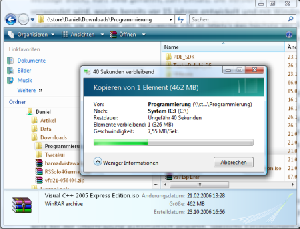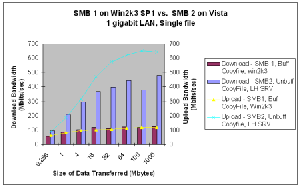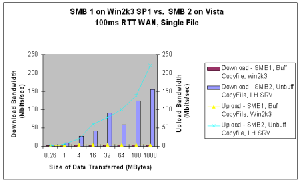Windows Server 2008 Reviewed
SMB 2.0 - Copying Files Faster
Whenever files are copied between Windows systems, the SMB protocol (short for Sever Message Block) is used. Version 1 of this protocol, which is still in use today, was developed 15 years ago and was introduced with Windows 3.11 for Workgroups. Since the fastest networks in use at the time generally offered a maximum transfer rate of 10 Mb/s, the protocol has become out of date. Indeed, with Gigabit Ethernet interfaces now a common feature even on budget motherboards, SMB can’t keep up with current network speeds.
Copying from \ServerShare - a classic application for the SMB protocol.
In specifying and creating version 2.0 of SMB, Microsoft has brought the protocol up to date. Among its benefits are that it can combine several requests in one data packet, meaning that more requests can be sent using fewer packets. Effectively, this reduces the overhead and consequently improves data throughput. Besides, more connections can be kept alive simultaneously, which in turn means more files can be open at the same time, improving the quality of the connection.
Bandwidth comparison SMB1 vs. SMB2 on the LAN
Bandwidth comparison SMB1 vs. SMB2 on the Internet
In order for the protocol to be used, both the server and the client need to support SMP 2.0. Windows Vista already uses SMB 2.0 and can thus benefit from the higher performance. The protocol is chosen automatically when a file transfer is initiated without requiring any additional settings by the user.
Get Tom's Hardware's best news and in-depth reviews, straight to your inbox.
Current page: SMB 2.0 - Copying Files Faster
Prev Page IPv6 - Internet Protocol Of The Future Next Page Integrated Virtualization - Hidden Installation-
FYI GoGrid is offering virtual Servers. They have a free $100 trial when you use the promo code 'GGED'. They are one of the first to offer 2008. EC2 doesn't even offer windows. www.gogrid.comReply


